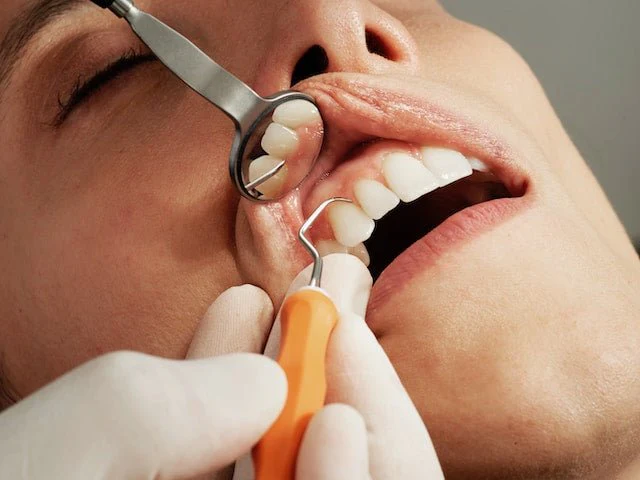
DenRoboTrack
Your path to a flawless smile

A Journey Through Time: Tracing the Evolution of Dentistry and the Art of Oral Care
Introduction
The rich tapestry of dentistry weaves together centuries of human ingenuity, cultural influences, and scientific advancements. From the rudimentary tools of ancient civilizations to the cutting-edge technologies of the 21st century, the history of dentistry reflects not only our quest for oral health but also the evolving nature of human societies. In this comprehensive exploration, we will delve deeper into the historical milestones that have shaped dentistry, uncovering the intricacies of its evolution and the remarkable artistry that has accompanied its journey.
Ancient Practices: The Foundations of Oral Care
The roots of dentistry stretch back to the earliest civilizations, where oral hygiene was a matter of necessity rather than choice. In ancient Egypt, a civilization renowned for its medical knowledge, toothaches were treated with concoctions of herbs and honey. Archaeological evidence reveals that the ancient Greeks and Romans utilized various tools, including primitive toothbrushes, for dental cleaning and maintenance.
During these early times, tooth extraction was a common practice, often performed by individuals with skills in both surgery and dentistry. Despite the limited tools and knowledge available, our ancestors recognized the importance of oral health, laying the groundwork for the development of more sophisticated dental practices in the future.
Middle Ages to Renaissance: A Period of Transition
The Middle Ages witnessed a decline in medical knowledge and a corresponding stagnation in dental care. Barber-surgeons, practitioners skilled in a range of medical procedures, including dental work, gained prominence as providers of dental services. However, their methods were often crude, and the understanding of oral health remained limited.
The Renaissance era marked a significant transition, as an increased focus on scientific inquiry and anatomy sparked a renewed interest in dentistry. A pivotal work during this period was the “Artzney Buchlein” by a German physician, offering comprehensive insights into oral hygiene and tooth extraction techniques. This marked a turning point, setting the stage for the emergence of more systematic dental practices.
18th and 19th Centuries: The Dawn of Modern Dentistry
The 18th century brought about a revolutionary figure in the history of dentistry – Pierre Fauchard, a French surgeon often referred to as the father of modern dentistry. His seminal work, “Le Chirurgien Dentiste,” not only laid the groundwork for the professionalization of dentistry but also introduced concepts such as dental fillings and prosthodontics. Fauchard’s emphasis on the importance of oral health and his innovative approaches set the stage for the transformative developments in the 19th century.
The 19th century witnessed the establishment of dental schools and a refinement of dental techniques. Anesthesia was introduced, revolutionizing the field by providing pain relief during dental procedures. This era saw the rise of porcelain teeth, crowns, and bridges, emphasizing the fusion of art and science within dentistry. The aesthetics of oral care became increasingly important, paving the way for a more holistic approach to dental health.
20th Century: Technological Breakthroughs and Preventive Dentistry
The 20th century was characterized by significant technological advancements that reshaped the landscape of dentistry. X-rays emerged as a crucial diagnostic tool, allowing dentists to visualize hidden dental issues and plan treatments more effectively. The 1950s saw the introduction of high-speed dental drills by John Borden, enhancing precision and efficiency during dental procedures.
One of the transformative shifts in the latter half of the 20th century was the move towards preventive dentistry. Fluoride treatments and sealants became integral components of dental care, focusing on early intervention to prevent tooth decay and other oral health issues. Composite resin materials were introduced as an alternative to traditional silver amalgam for dental fillings, offering improved aesthetics and durability.
Contemporary Dentistry: A Symphony of Innovation
As we step into the 21st century, dentistry has undergone a profound transformation, becoming a sophisticated and patient-centric field. Digital impressions have replaced traditional molds, offering enhanced accuracy and efficiency in creating dental restorations. CAD/CAM technology has revolutionized the design and manufacturing of dental prosthetics, enabling same-day fabrication of crowns, veneers, and bridges.
Intraoral cameras provide detailed views of the inside of the mouth, aiding in precise diagnosis and patient education. 3D printing technology has expanded possibilities in dental implantology and prosthodontics, allowing for customized and precise solutions. Teledentistry has emerged as a response to the digital age, providing virtual consultations and monitoring, enhancing accessibility to dental care.
Conclusion
The evolution of dentistry is a testament to human resilience, adaptability, and the pursuit of optimal health. From ancient remedies to the technological marvels of today, each era has left its indelible mark on the canvas of oral care. Dentistry is not merely a scientific discipline; it is an intricate interplay of historical, cultural, and technological elements.
As we reflect on this journey through time, it becomes evident that dentistry is not only about addressing oral health issues but also about preserving and enhancing one of the most distinctive features of our identity – our smiles. The story of dentistry is ongoing, with each advancement contributing to a future where oral health is not just a medical concern but a testament to our commitment to overall well-being. In the symphony of innovation and artistry, dentistry continues to evolve, promising a future where smiles are not only preserved but celebrated as reflections of the intricate journey through time.